You are here
Colorado READ Act FAQs
Jump to a section:
What is the READ Act?
The Colorado READ Act passed in 2012 by the Colorado legislature with the purpose of ensuring every student in Colorado can read at grade level by the time they exit third grade. The legislation was born out of convincing research by a variety of sources, including by the Annie E. Casey Foundation, that shows students who cannot read by the end of the third grade are four times more likely to drop out of high school.
READ Act starts by making sure all students receive instruction in the foundational skills of reading. In kindergarten, students learn to discriminate sounds in words and map them to the letters they represent. This continues through the grades until each third-grade student can read with ease, understand the materials and think critically.
The provisions of the Act promote early identification of reading difficulties and effective intervention to quickly close reading gaps and ensure all Colorado students can demonstrate a level of competency in reading skills necessary to achieve success in school.
What is a Significant Reading Deficiency?
Pursuant to the READ Act, teachers in grades kindergarten through three administer an interim assessment to all children in order to determine whether children are making sufficient progress to grade level reading proficiency. When students are identified as significantly below grade level (called a “significant reading deficiency” or SRD), teachers administer a diagnostic assessment to determine specific areas of need for reading improvement. Teachers use this information to collaboratively develop an intervention plan (called a READ plan) with the child’s parents to bring the child up to grade level reading proficiency. Students continue to receive intervention supports until the teacher determines that the child has met reading skill competencies of their current grade level.
How are students assessed?
The READ Act requires use of an interim assessment to determine whether a student has a significant reading deficiency in grades K through 3. Every spring, districts report assessment results to CDE. In spring 2017, a total of 258,779 reading assessments were reported to CDE of kindergarten through third-grade students. Of those students, 40,533 (15.7 percent) were identified as having a significant reading deficiency, a
slight increase from the 2016 total of 39,014 or 14.8 percent.
Overall data on the prevalence of significant reading deficiencies in the kindergarten through third-grade student population is depicted in the table below.
* This chart shows the comparison of students identified as having a Significant Reading Deficiency (SRD) by grade level as reported in the 2017 collection. The first line shows 10.5 percent of 13,735 half-day kindergartners had a SRD. The second line shows 10,2 percent of 48,349 full-day kindergartners tested had a SRD. The third line shows 17.4 percent of 63,720 first-graders tested had a SRD. The fourth line shows 16.5 percent of 65,615 second-graders tested had a SRD. And the fifth line shows 18.2 percent of 67,360 third-graders had a SRD. A total of 258,779 K-3 students were tested in 2017 with a total of 15.7 percent having a SRD. Note, this doesn’t include students who were exempt from taking a READ Act assessment.
What is the prevalence of significant reading deficiencies by district?
The state collects READ Act data every year to determine per-pupil funding for districts by taking the count of students at the end of the year who have a significant reading deficiency. Districts submit records of spring assessment data for all K-3 students enrolled at the time of data submission and 4-12 grade students who are included in the READ cohort. Follow this link for information on the yearly data collection.
What are the trends across demographic groups?
An analysis of the 2017 READ Act data reveals a number of trends across racial/ethnic groups. American Indian/ Alaska Native, Black/African American , and Hispanic/Latino students were more likely to be identified with an SRD than their Asian, White, Native Hawaiian/Other Pacific Islander, and multi-racial peers. These trends have remained consistent across all four years of READ Act implementation.
* Bar graph showing the percentage of K-3 students with significant reading deficiencies as depicted across demographic groups from 2015-2017. Races include children of two or more races, American Indian or Alaska Native, Hispanic or Latino, Black or African American, Asian, White and Native Hawaiian or other Pacific Islander.
* Bar graph showing the percentage of K-3 English language learners identified with a Significant Reading Deficiency from 2015-2017.
The SRD rates increased in 2017, why?
Since the passage of the READ Act in 2012, districts have transitioned away from grandfathered assessments
(DRA2 and DIBELS 6th edition) that were allowed by the law through July of 2016. The 2017 data collection was
the first to include only assessments specifically approved for the purposes of the READ Act. These assessments
have been discovered to be more sensitive than the previously allowed tools. It is possible that the slight
increase in Colorado students identified with SRDs could be explained in part by the full transition to approved
READ Act assessments.
Results from the 2017 READ collection confirm that continued dedication is needed in order to change the
reading and school success trajectory for many of Colorado’s kindergarten through third-grade students. The
urgency is even greater for students with other school success risk factors in their lives.
Why is early SRD identification the key to reading success?
Early identification of an SRD is important. The table below illustrates that of the 3,268 kindergarten students identified with an SRD in 2013, about 39 percent still had an SRD three years later. In contrast, of the students identified with an SRD in second grade, 69 percent still had an SRD the following year as third graders. Students who are identified in early grades (K-1) have a greater chance of reducing their risk for reading difficulties and no longer being identified as having an SRD by third grade as compared to those who are not identified until later grades.Early identification of an SRD is critical to supporting struggling readers. Students who are identified in early grades (K-1) have a greater chance of no longer being identified as having an SRD by third grade compared to those who are not identified until later grades. Figure 8 illustrates the SRD identification rates for matched cohorts of students. These data show that the rate of SRD identification for the kindergarten students identified with an SRD in 2014 was reduced by over half (45.5 percent) three years later. In contrast, of the students identified with an SRD in second grade, 71.3 percent still had an SRD the following year as third-graders.
* The matched cohort of students with a significant reading deficiency across the years.
Are students not reading at grade level by the end of third grade held back?
There are serious implications to a student’s likelihood of graduating from high school when reading competency is not achieved by third grade. Under the READ Act, when a child is identified as having an SRD, the parent, the student’s teacher, and other personnel are required to meet and consider
retention, or having a student repeat a grade, as an intervention strategy. The purpose of the meeting is to determine whether the student, despite having an SRD, will be able to maintain adequate academic progress at the next grade level.
Retention is not the first strategy or option for support. The READ Act requires identification of students who are struggling to read as early as kindergarten, with frequent literacy screenings and parent notification/updates on progress over multiple school years. Students are given individual reading plans (READ plans), home reading strategies and intervention support services through school, and reading progress is monitored and shared with parents at frequent intervals throughout the year.
In Colorado, the option of retention continues to be used for a very small percentage (approximately 1 percent to 2 percent) of students identified with an SRD. This statistic has remained consistent across all four years of READ Act implementation, with 800 students retained in 2014, 638 in 2015, 642 in 2016 and 619 reported as being retained in 2017.
* This pie chart shows the number of K-3 students who were retained in 2017 in Colorado schools by their grade level - 267 in kindergarten, 198 in first grade, 100 in second grade and 54 in third grade.
Is retention simply repeating the third grade?
No. Students who repeat third grade should be supported with a comprehensive program of intensive intervention. Students should
receive an evidence-or research-based K-3 reading program designed to give students every opportunity to be successful. Continued literacy
screenings and student progress updates should be used to determine the student’s learning needs. Students should be placed with highly
effective teachers and in classrooms to optimize learning. The repeated grade should be designed to bring students who are significantly below
grade level up to the required level of proficiency to be successful in fourth grade and beyond.
Is promotion to fourth grade based only on one test score?
No. Promotion decisions are based on a comprehensive assessment of the student’s mastery of third grade reading skills. Students have different
opportunities to demonstrate sufficient reading skills for promotion to fourth grade.
Can students learn to read after third grade without challenge?
Students rarely catch up if they have not mastered reading by third grade. Students must learn to read in K-3 in order to read to learn in fourth grade and beyond. Reading to learn means comprehending facts in social studies and science, understanding word problems in math and interpreting complex materials in language arts.
Is there really a correlation between being able to read at third grade and graduating from high school?
The ability to read by third grade is imperative for a student’s ability to graduate from high school. This includes the years of high school and beyond, to career and/or college. Students who are not reading proficiently in third grade are four times more likely to not graduate high school, according to a national study by the Annie E. Casey Foundation.
How is the READ Act money distributed?
The READ Act provides per-pupil intervention funds to assist LEAs with interventions for students identified as having significant reading deficiencies. For the 2017-18 school year, the total amount of funds available for distribution to districts was approximately $33 million. The state’s investment in and commitment to early literacy serves to advance Colorado’s collective goal of all children reading at grade level by the end of the third grade.
The department allocates the per-pupil intervention funds to LEAs by dividing the amount of funds available by the total number of students enrolled in kindergarten through third grade in public schools identified as having a significant reading deficiency. LEAs may use the per-pupil intervention funds to provide full-day kindergarten, operate a summer school literacy program, purchase tutoring services, and/or provide other targeted, scientifically or evidence-based intervention services as allowed in statute. In the spring of 2017, districts reported 40,533 students as having a significant reading deficiency. The appropriated funds were distributed to 181 LEAs at a per-pupil amount of $813.98. Per-pupil intervention money may only be used for the authorized intervention services outlined in statute for students identified as having a significant reading deficiency:
- Providing full-day kindergarten;
- Purchasing tutoring services in reading;
- Providing other targeted, scientifically or evidence-based intervention; or
- Operating a summer school literacy program.
* If any of this information is needed in an alternate format, please contact the Communications Division.


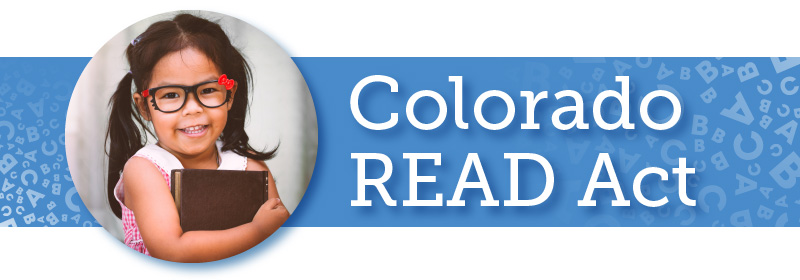
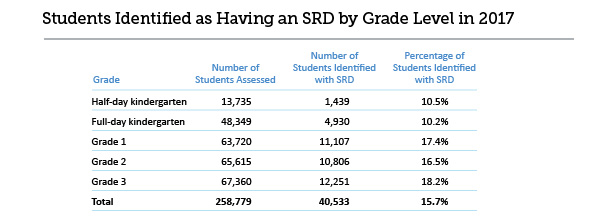
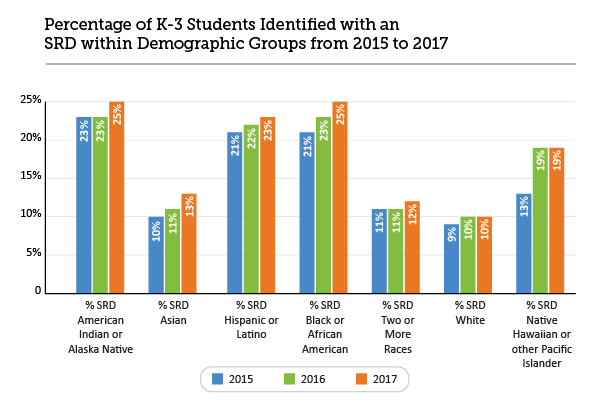
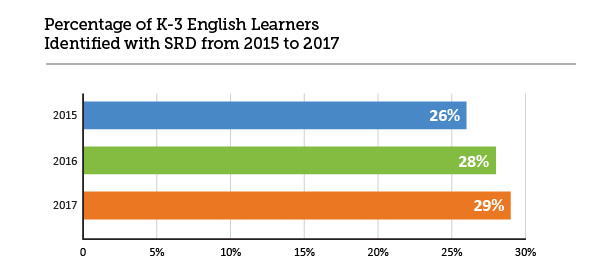
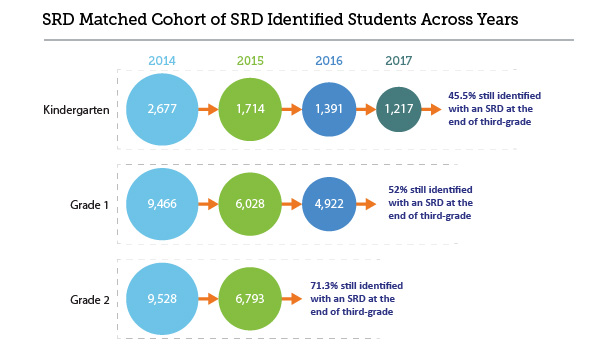
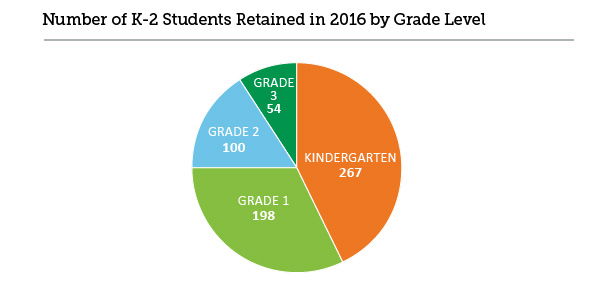

Connect With Us





